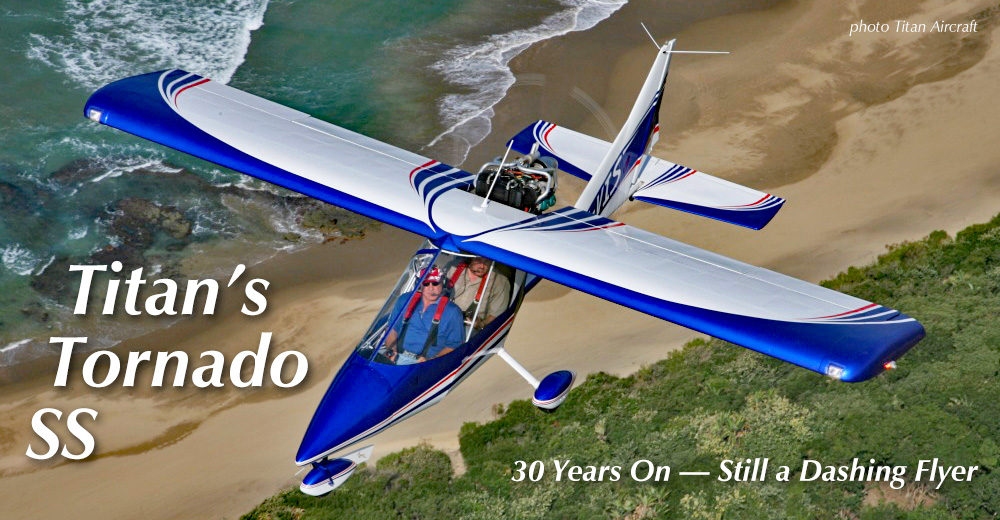 Usually, aviation journalists attending airshows seek the latest and greatest in aircraft. We love to find aircraft our readers have never seen and I’ve reported some of those in recent days.
Today, however, I’m going to step back in time to an aircraft model series I have not covered in years.
Titan Aircraft has become well known for their take on the ever-popular P-51 Mustang. In Titan’s case this resulted in the 75%-scale T-51 Mustang. You can read my different-than-usual report on that aircraft in this article.
Yet the longtime Ohio producer also continues to make their dashing Tornado in four varieties. One of those, the SS or Super Stretch model is my focus.
Titan Tornado SS
“Super Stretch”
Tornado started out as a single place aircraft back in the early days of FAA’s Part 103 regulation. That rule came out in fall of 1982 and a few years later, Titan got in the game with their 1+1 Tornado.
Usually, aviation journalists attending airshows seek the latest and greatest in aircraft. We love to find aircraft our readers have never seen and I’ve reported some of those in recent days.
Today, however, I’m going to step back in time to an aircraft model series I have not covered in years.
Titan Aircraft has become well known for their take on the ever-popular P-51 Mustang. In Titan’s case this resulted in the 75%-scale T-51 Mustang. You can read my different-than-usual report on that aircraft in this article.
Yet the longtime Ohio producer also continues to make their dashing Tornado in four varieties. One of those, the SS or Super Stretch model is my focus.
Titan Tornado SS
“Super Stretch”
Tornado started out as a single place aircraft back in the early days of FAA’s Part 103 regulation. That rule came out in fall of 1982 and a few years later, Titan got in the game with their 1+1 Tornado.Sun ‘n Fun 2021 / Day 4 — Still Great 30 Years Later: Titan Aircraft’s Tornado Comes in Four Flavors

Today, however, I’m going to step back in time to an aircraft model series I have not covered in years.
Titan Aircraft has become well known for their take on the ever-popular P-51 Mustang. In Titan’s case this resulted in the 75%-scale T-51 Mustang. You can read my different-than-usual report on that aircraft in this article.
Yet the longtime Ohio producer also continues to make their dashing Tornado in four varieties. One of those, the SS or Super Stretch model is my focus.
Titan Tornado SS
“Super Stretch”
Tornado started out as a single place aircraft back in the early days of FAA’s Part 103 regulation. That rule came out in fall of 1982 and a few years later, Titan got in the game with their 1+1 Tornado.

In a video that will follow with a deeper explanation, John told me he loved the Hawk and thought highly of it. Hawk is a construction significantly of gusseted aluminum tubing. This works very well but is somewhat more flexible, “willowy” some might say. It can flex more in the sky and while this is not a structural problem on its own and while a more flexible structure can offload aerodynamic stress, this makes for a somewhat less efficient airfoil. The single place Hawk needed no more, but John believed the heavier two seat Hawk flexed more than he thought was optimal.

John also noted that the tauter wing structure made the aircraft more responsive in handling. Tornado could and still can do loops and rolls with ease …in experienced hands, of course. I don’t want to encourage anyone to do aerobatics without proper instruction.
All-Metal Airframe
“Tornado I was the first kit that we produced,” said John. “Nearly three decades after it was released, it is revered for its durability and longevity, thanks to its all metal airframe.” He admitted he didn’t know these airplanes would last so long and now finds himself competing with his own aircraft on the used market.

Obviously, Team Titan is proud of their achievement and, in support of those claims, more than 800 are flying, John reported at Sun ‘n Fun 2021.
“I do spend more time with our T-51 these days but every time I take someone up in Tornado, I always get out with a smile on my face.” As he said the words, his smile broaded with the memory.

In the foreground of this view you see the right aileron spade, a mechanism to lighten handling and increase response. They are very effective but not commonly seen.
Four Tornado Models — The first model, Tornado I, had a jump seat with no aft controls …and not much room for a regular sized person in the aft seat. Customers asked for more room and following the D model, Titan created the Tornado S or “Stretch” model adding two inches of height and three inches of length. Customers wanted even more room, though, so their Super Stretch Tornado added another two inches of height and another three inches of length to make the SS version seen in the accompanying photos. A few inches makes a large difference inside the cabin. All models remain in production today.

“Tornado models combine friendly low-speed handling characteristics with agility and high performance,” Titan observed on their website. Tornado I is designed to a +6g / -4g load limit capability at 750 pounds gross weight. With a Rotax 503 engine, cruise speed is in excess of 95 mph. The stall speed in landing configuration flying solo is 30 mph.

Priced at $27,000 for the airframe kit in early 2021, you’ll add a similar amount for the 912 engine, if bought new, and you can spend more or less on avionics and paint schemes. Owners have told me they got their Tornado in the air for $60,000-75,000. In today’s world, that qualifies for the “affordable” term. The money buys an energetic, well-handling machine that should last you many years.
TECHNICAL SPECIFICATIONS
Titan Tornado Super Stretch (SS)
- Empty Weight — 640 pounds (290 kilograms)
- Gross Weight — 1,200 pounds (544 kilograms)
- Length — 19 feet 11 inches (6.07 meters)
- Height — 6 feet 11 inches (2.11 meters)
- Wing Span — 26 feet (7.92 meters)
- Wing Area — 120 square feet (11.15 square meters)
- Cabin Width — 28.5 inches (0.724 meters)
- Cabin Head Room — 43 inches (1.092 meters)
- Cabin Leg Room — 43.5 inches (1.105 meters)
- Fuel Capacity — 15 U.S. gallons (57 liters)
- Engine — Rotax 912 or Jabiru 2200/3300
- Power — 80-120 horsepower (60-89 kilowatts)
- Never Exceed Speed — 150 miles per hour (241 kilometers per hour)
- Cruise Speed — 110-125 miles per hour (177-201 kilometers per hour)
- Stall Speed — 40 miles per hour (64 kilometers per hour)
- Range — 315-630 statute miles (500-1,000 kilometers)
- Climb Rate — 1,600-2,000 feet per minute (8-10 meter per second)
- Take Off Run — 250 feet (75 meters)
- Landing Roll — 250 feet (75 meters)
 Usually, aviation journalists attending airshows seek the latest and greatest in aircraft. We love to find aircraft our readers have never seen and I’ve reported some of those in recent days.
Today, however, I’m going to step back in time to an aircraft model series I have not covered in years.
Titan Aircraft has become well known for their take on the ever-popular P-51 Mustang. In Titan’s case this resulted in the 75%-scale T-51 Mustang. You can read my different-than-usual report on that aircraft in this article.
Yet the longtime Ohio producer also continues to make their dashing Tornado in four varieties. One of those, the SS or Super Stretch model is my focus.
Titan Tornado SS
“Super Stretch”
Tornado started out as a single place aircraft back in the early days of FAA’s Part 103 regulation. That rule came out in fall of 1982 and a few years later, Titan got in the game with their 1+1 Tornado.
Usually, aviation journalists attending airshows seek the latest and greatest in aircraft. We love to find aircraft our readers have never seen and I’ve reported some of those in recent days.
Today, however, I’m going to step back in time to an aircraft model series I have not covered in years.
Titan Aircraft has become well known for their take on the ever-popular P-51 Mustang. In Titan’s case this resulted in the 75%-scale T-51 Mustang. You can read my different-than-usual report on that aircraft in this article.
Yet the longtime Ohio producer also continues to make their dashing Tornado in four varieties. One of those, the SS or Super Stretch model is my focus.
Titan Tornado SS
“Super Stretch”
Tornado started out as a single place aircraft back in the early days of FAA’s Part 103 regulation. That rule came out in fall of 1982 and a few years later, Titan got in the game with their 1+1 Tornado.

 Montaer’s MC01 starts with 4130 molybdenum steel tube “to provide greater safety to the crew.” MC01 is skinned with an aluminum fuselage and wings. These materials are popular with American pilots who are aware they can achieve repairs almost anywhere.
Montaer’s MC01 starts with 4130 molybdenum steel tube “to provide greater safety to the crew.” MC01 is skinned with an aluminum fuselage and wings. These materials are popular with American pilots who are aware they can achieve repairs almost anywhere. MC01 has dual control yokes with a steerable nose wheel and dual toe brakes. Although many Sport Pilots say they prefer — or at least have adjusted to — joystick control, many pilots find control yokes preferable. No joystick option is presently available.
MC01 has dual control yokes with a steerable nose wheel and dual toe brakes. Although many Sport Pilots say they prefer — or at least have adjusted to — joystick control, many pilots find control yokes preferable. No joystick option is presently available. Elevator trim controls are provided on both yokes. At the base of the instrument panel pilots will find all circuit breakers and other switches. Throughout this design, you see a layout that most pilots will find familiar and comfortable. All these common controls may help pilots quickly adapt to flying Light-Sport.
Elevator trim controls are provided on both yokes. At the base of the instrument panel pilots will find all circuit breakers and other switches. Throughout this design, you see a layout that most pilots will find familiar and comfortable. All these common controls may help pilots quickly adapt to flying Light-Sport. Although
Although 


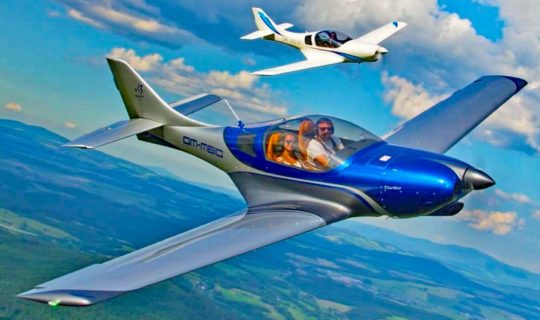 The subjects of today’s post from Lakeland, Florida, VL3 from JMB Aircraft plus Tarragon Aircraft — along with a handful of other designs (see this
The subjects of today’s post from Lakeland, Florida, VL3 from JMB Aircraft plus Tarragon Aircraft — along with a handful of other designs (see this 

 Of course, such high-tech construction also pushes up the price. Neither of these airplanes are in the range of what I’d call “affordable” for readers of this website. In fact Tarragon is carving out a space near the very top of where LSA are priced. In their booth, I heard staff quote numbers north of $300,000. It’s a breathtaking aircraft with a breathtaking price to match.
Of course, such high-tech construction also pushes up the price. Neither of these airplanes are in the range of what I’d call “affordable” for readers of this website. In fact Tarragon is carving out a space near the very top of where LSA are priced. In their booth, I heard staff quote numbers north of $300,000. It’s a breathtaking aircraft with a breathtaking price to match.
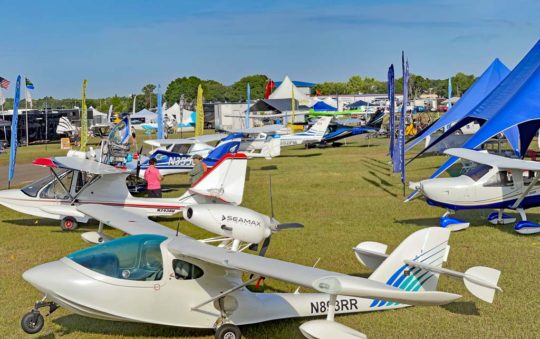 On a beautiful evening, almost 200 light aircraft businesspeople attended the DeLand Showcase annual reception. Smiles were plentiful as these vendors enjoyed a return to normalcy and an airshow routine that fuels their enterprise so they can better serve their pilot customers.
On a beautiful evening, almost 200 light aircraft businesspeople attended the DeLand Showcase annual reception. Smiles were plentiful as these vendors enjoyed a return to normalcy and an airshow routine that fuels their enterprise so they can better serve their pilot customers.




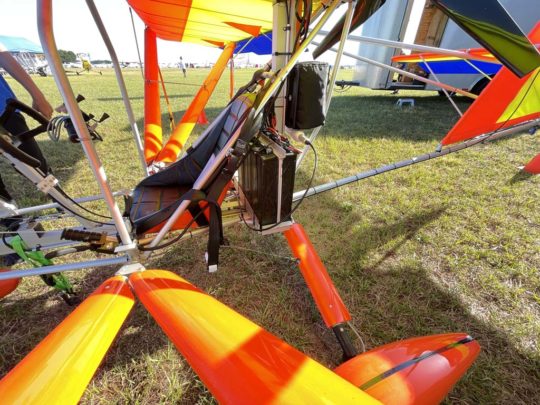






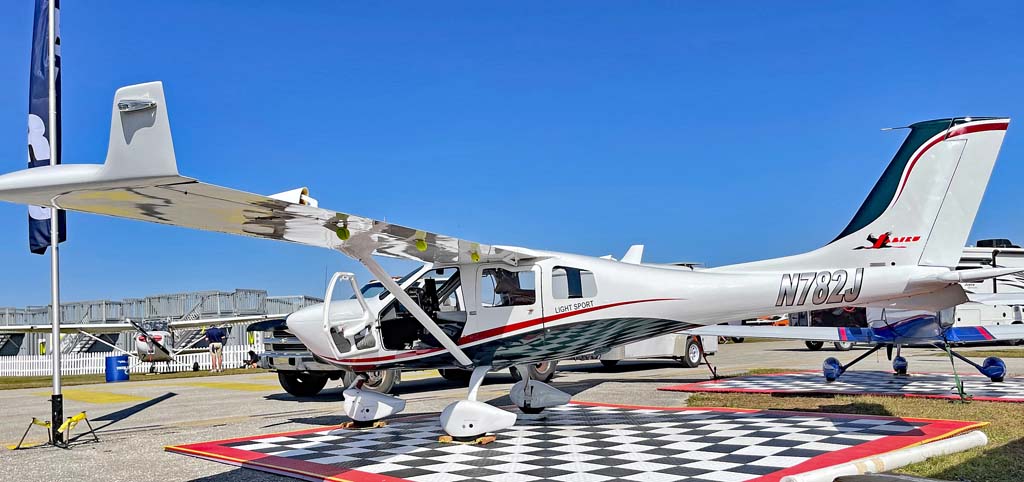
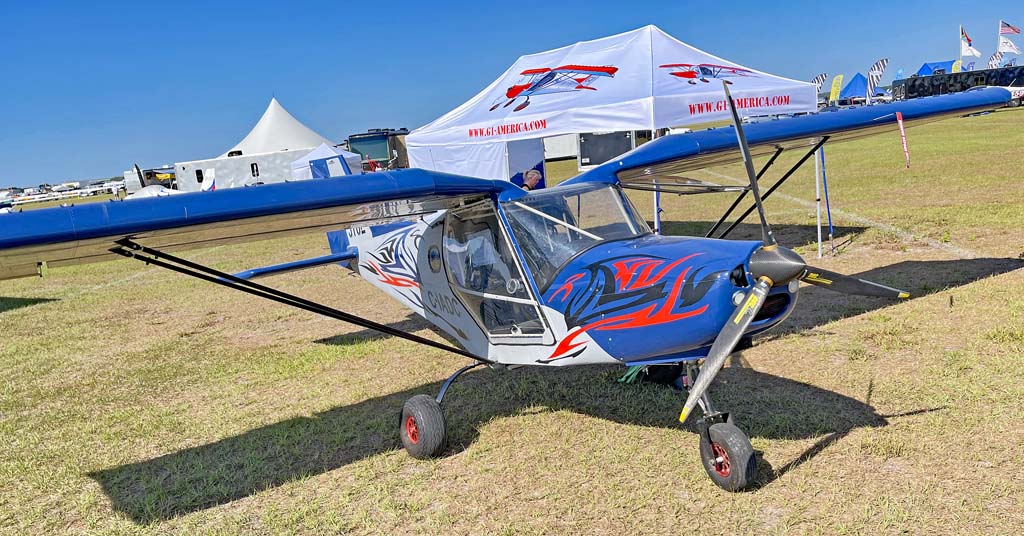 G1 certainly resembles the CH-750 but it has its own design history. I interviewed the developer in Europe some years ago but G1 now has representation in North America. A Canadian representative could not get to Sun ‘n Fun so some American associates were able to convince authorities to let them transport this aircraft so you can examine it. Videoman Dave has
G1 certainly resembles the CH-750 but it has its own design history. I interviewed the developer in Europe some years ago but G1 now has representation in North America. A Canadian representative could not get to Sun ‘n Fun so some American associates were able to convince authorities to let them transport this aircraft so you can examine it. Videoman Dave has 
 Can aviation lead us back toward normal? Globally, governments have ordered their citizens to stay at home and all the rest, as you’ve heard ad naseum. Some places — Florida, as a sunshining example — is more open than others but much of civilization remains restricted.
Can aviation lead us back toward normal? Globally, governments have ordered their citizens to stay at home and all the rest, as you’ve heard ad naseum. Some places — Florida, as a sunshining example — is more open than others but much of civilization remains restricted. 






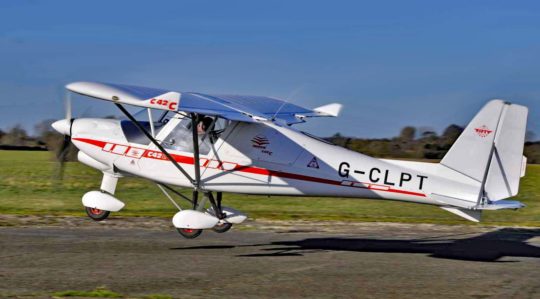 Yet no one can dispute that C42 — once rebadged as Cyclone for American buyers — has for many years been THE success story in Germany. This southern German company celebrated its 50th anniversary in 2020.
Yet no one can dispute that C42 — once rebadged as Cyclone for American buyers — has for many years been THE success story in Germany. This southern German company celebrated its 50th anniversary in 2020. Now in its “C” model configuration, C42 is one of the most successful European microlights (a category between Part 103 ultralights and LSA, but closer to the latter). Comco Ikarus has evolved the machine into a fine airplane.
Now in its “C” model configuration, C42 is one of the most successful European microlights (a category between Part 103 ultralights and LSA, but closer to the latter). Comco Ikarus has evolved the machine into a fine airplane.
 Aft of the cockpit there’s a frangible cover which the BRS rocket fires through, and a very large quickly removable panel on the port side, through which the fuel quantity can be seen and a lot of the interior structure visually inspected. The rear baggage bay can hold up to 100 pounds, weight and balance allowing.
Aft of the cockpit there’s a frangible cover which the BRS rocket fires through, and a very large quickly removable panel on the port side, through which the fuel quantity can be seen and a lot of the interior structure visually inspected. The rear baggage bay can hold up to 100 pounds, weight and balance allowing. Less obvious changes include a significant revision of the wing structure with more use of carbon fiber. C42C’s cockpit roof has been completely redesigned and the doors are now hung on redesigned hinges.
Less obvious changes include a significant revision of the wing structure with more use of carbon fiber. C42C’s cockpit roof has been completely redesigned and the doors are now hung on redesigned hinges. After fastening my four-point harness, I raised the throttle into its correct position and familiarized myself with the cockpit. Throttles on both sides fold flat to aid ingress and egress.
After fastening my four-point harness, I raised the throttle into its correct position and familiarized myself with the cockpit. Throttles on both sides fold flat to aid ingress and egress. A central column braces the instrument panel and carries push/pull plungers for the choke; cabin heat and carb heat; a transceiver and transponder; and a toggle switch for the intercom. C42C’s fuel selector is located at the base of the central column by the pilot’s right leg; easy to see and reach. Large map pockets are built into the doors.
A central column braces the instrument panel and carries push/pull plungers for the choke; cabin heat and carb heat; a transceiver and transponder; and a toggle switch for the intercom. C42C’s fuel selector is located at the base of the central column by the pilot’s right leg; easy to see and reach. Large map pockets are built into the doors.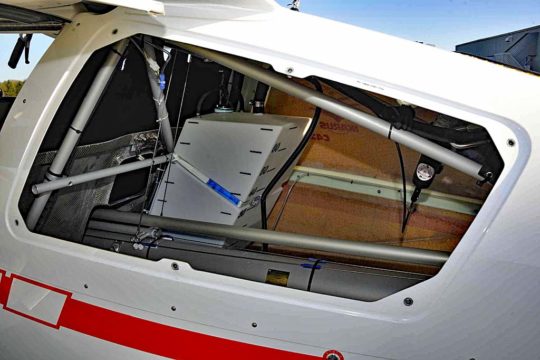 With my solo loaded weight about 200 pounds below gross, a paved runway, and a brisk headwind, I anticipated a stellar take off and climb characteristics and I was not disappointed! The prop was pitched for cruise but you’d never guess. I reached 1,000 feet above the runway before the airfield boundary.
With my solo loaded weight about 200 pounds below gross, a paved runway, and a brisk headwind, I anticipated a stellar take off and climb characteristics and I was not disappointed! The prop was pitched for cruise but you’d never guess. I reached 1,000 feet above the runway before the airfield boundary. Moving onto an examination of the stick-free stability around all three axes reveals the directional stability is definitely soft to the left and neutral to the right, while spiral stability is slightly positive from the right and neutral to the left. The longitudinal stability is quite strong; a 10-knot displacement from a trimmed speed of 70 knots resulting in a long wavelength low amplitude phugoid that damped itself out after three lazy oscillations. Importantly, C42C is not divergent around any axes.
Moving onto an examination of the stick-free stability around all three axes reveals the directional stability is definitely soft to the left and neutral to the right, while spiral stability is slightly positive from the right and neutral to the left. The longitudinal stability is quite strong; a 10-knot displacement from a trimmed speed of 70 knots resulting in a long wavelength low amplitude phugoid that damped itself out after three lazy oscillations. Importantly, C42C is not divergent around any axes.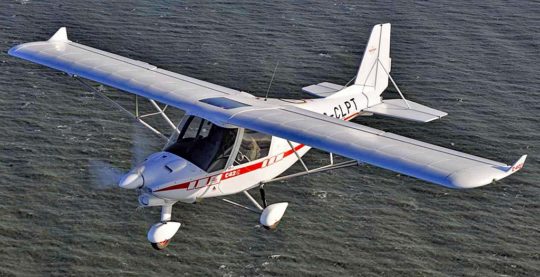 Comco Ikarus reports a glide angle of 11:1 (a Cessna 150 is about 9.5:1), while minimum sink rate is around 400 feet per minute.
Comco Ikarus reports a glide angle of 11:1 (a Cessna 150 is about 9.5:1), while minimum sink rate is around 400 feet per minute.


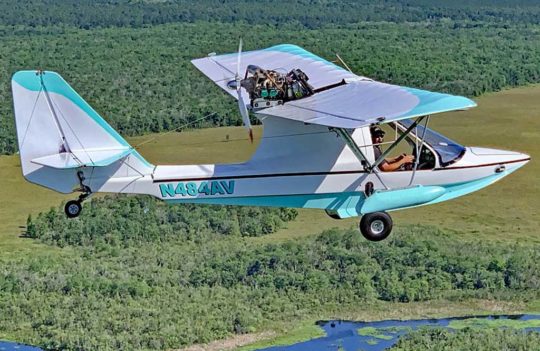 Consider this. Even today, in 2021, you can buy a complete Aventura kit for something north of $50,000. While that will be a basic machine and while you’ll spend hours building it — an activity many find highly satisfying — you must put that pricing in perspective.
Consider this. Even today, in 2021, you can buy a complete Aventura kit for something north of $50,000. While that will be a basic machine and while you’ll spend hours building it — an activity many find highly satisfying — you must put that pricing in perspective. Indeed, the most basic kit Aventura can cost little more than fifty grand — for the whole aircraft, engine, boat hull, everything — where floats alone for a Cessna 172, for example, may cost the same.
Indeed, the most basic kit Aventura can cost little more than fifty grand — for the whole aircraft, engine, boat hull, everything — where floats alone for a Cessna 172, for example, may cost the same. All that monitoring and mandatory activity costs money and will be reflected in Aventura SLSA’s selling price. However, I’m willing to bet you lunch at my favorite restaurant that this will still be the most reasonably priced aircraft among seaplanes. Care to take the bet?
All that monitoring and mandatory activity costs money and will be reflected in Aventura SLSA’s selling price. However, I’m willing to bet you lunch at my favorite restaurant that this will still be the most reasonably priced aircraft among seaplanes. Care to take the bet?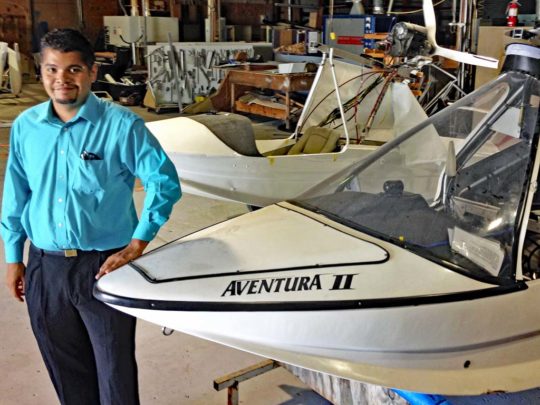
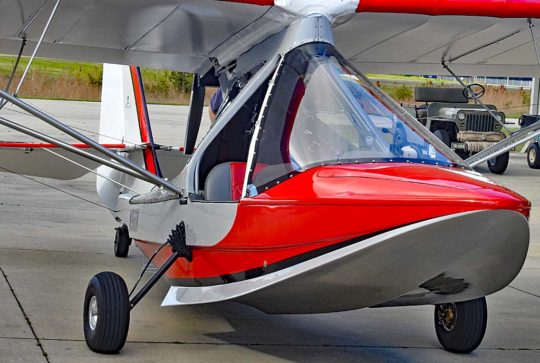


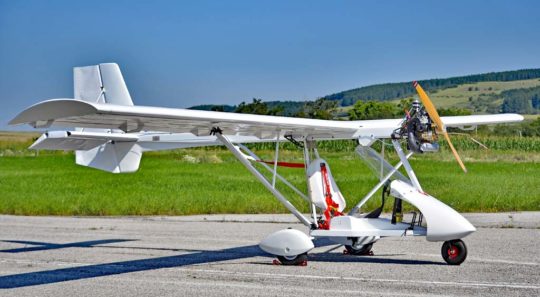 Bulgarian designer Tony Ilieff is on a mission to find new representatives for his handsome light aircraft after concluding earlier representation in Canada. Built carefully — that is, without lots of weighty options — Solo can fit the Part 103 category. Given accelerating interest in Part 103 aircraft in recent years, I’d bet someone will step up for this opportunity.
Bulgarian designer Tony Ilieff is on a mission to find new representatives for his handsome light aircraft after concluding earlier representation in Canada. Built carefully — that is, without lots of weighty options — Solo can fit the Part 103 category. Given accelerating interest in Part 103 aircraft in recent years, I’d bet someone will step up for this opportunity. While candidate Bernie Sanders criticized stores selling numerous brands of deodorant, choice serves highly-individualized interests. We don’t all want the same things.
While candidate Bernie Sanders criticized stores selling numerous brands of deodorant, choice serves highly-individualized interests. We don’t all want the same things. As noted, this company, in very different form and with a military mission, started almost 100 years ago in 1912 as the Bulgarian State Aircraft Workshops. In 1925 the company started producing airplanes under a name employing the letters DAR.
As noted, this company, in very different form and with a military mission, started almost 100 years ago in 1912 as the Bulgarian State Aircraft Workshops. In 1925 the company started producing airplanes under a name employing the letters DAR.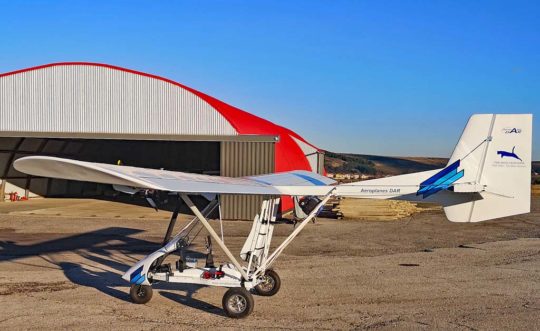 Solo UL gives the owner somewhat higher weight — 260 kilograms or 572 pounds gross — that can allow more options. Solo has been designed be a bit heavier than a typical Part 103 entry, but you’ll need an inspection and N-numbers, a pilot certificate, and you’ll have to build it from a kit. Buyers, however, are often attracted to genuine Part 103 models that can be bought ready-to-fly.
Solo UL gives the owner somewhat higher weight — 260 kilograms or 572 pounds gross — that can allow more options. Solo has been designed be a bit heavier than a typical Part 103 entry, but you’ll need an inspection and N-numbers, a pilot certificate, and you’ll have to build it from a kit. Buyers, however, are often attracted to genuine Part 103 models that can be bought ready-to-fly. Interest in Part 103 ultralights has been heating up according to my best information. As I seek to ask every single one of the 58 producers of Part 103-compliant aircraft about their recent sales successes I expect to learn more. Information flowing from Tony is start of what I expect and hope will be many more examples.
Interest in Part 103 ultralights has been heating up according to my best information. As I seek to ask every single one of the 58 producers of Part 103-compliant aircraft about their recent sales successes I expect to learn more. Information flowing from Tony is start of what I expect and hope will be many more examples. Solo from Aeroplanes DAR is a single-seat, single-engine, high-wing ultra-light airplane. All Solo models are constructed with mixed materials involving aluminum wings and composite airframe. During development Aeroplanes DAR introduced new technologies and unique practices.
Solo from Aeroplanes DAR is a single-seat, single-engine, high-wing ultra-light airplane. All Solo models are constructed with mixed materials involving aluminum wings and composite airframe. During development Aeroplanes DAR introduced new technologies and unique practices. “We made several modifications through the years; the Solo we produce now is the fifth generation.”
“We made several modifications through the years; the Solo we produce now is the fifth generation.” As reported earlier, prices are good enough that the Canadian dealer offered Solo for only $18,900 — though that is no guarantee prices will remain as they were. However, this figure shows Solo to be affordable to many buyers.
As reported earlier, prices are good enough that the Canadian dealer offered Solo for only $18,900 — though that is no guarantee prices will remain as they were. However, this figure shows Solo to be affordable to many buyers.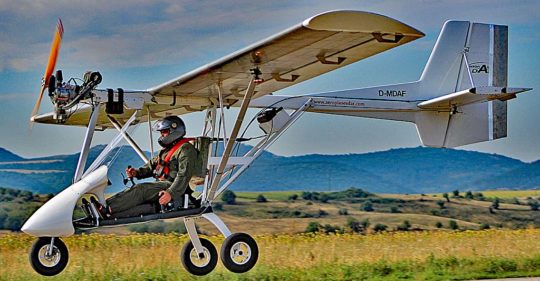 On Solo UL, a Thor 250 DS produces 36.5 horsepower through a two-blade wooden prop. For those interested to earn a bit of extra weight, a Galaxy GRS 260 emergency parachute fits this light aircraft well.
On Solo UL, a Thor 250 DS produces 36.5 horsepower through a two-blade wooden prop. For those interested to earn a bit of extra weight, a Galaxy GRS 260 emergency parachute fits this light aircraft well.
 For far too long, the more bigoted aviators among us considered such an aircraft to be little more an overweight hang glider powered by a second-hand lawn mower engine and barely capable of flying fast enough to kill you. Noisy, slow, and smelly — they were considerably less than satisfactory. However, times change and this class of flying machine has changed more than most.
For far too long, the more bigoted aviators among us considered such an aircraft to be little more an overweight hang glider powered by a second-hand lawn mower engine and barely capable of flying fast enough to kill you. Noisy, slow, and smelly — they were considerably less than satisfactory. However, times change and this class of flying machine has changed more than most. Flylight’s main subcontractor is Aeros, based in Kiev, Ukraine. Aeros make some of the world’s best hang gliders; they are experts in tube and fabric work. They’ve built Skyrangers for many years. Today, Nynjas are assembled in the UK.
Flylight’s main subcontractor is Aeros, based in Kiev, Ukraine. Aeros make some of the world’s best hang gliders; they are experts in tube and fabric work. They’ve built Skyrangers for many years. Today, Nynjas are assembled in the UK. Earlier Skyrangers were powered by several different engines, including the Jabiru 2200, HKS and BMW R100, but these days the
Earlier Skyrangers were powered by several different engines, including the Jabiru 2200, HKS and BMW R100, but these days the  All three wheels feature snug fitting wheel pants. Nynja’s main gear is supported by aluminium “half springs” bolted to a steel center tube and feature hydraulic
All three wheels feature snug fitting wheel pants. Nynja’s main gear is supported by aluminium “half springs” bolted to a steel center tube and feature hydraulic 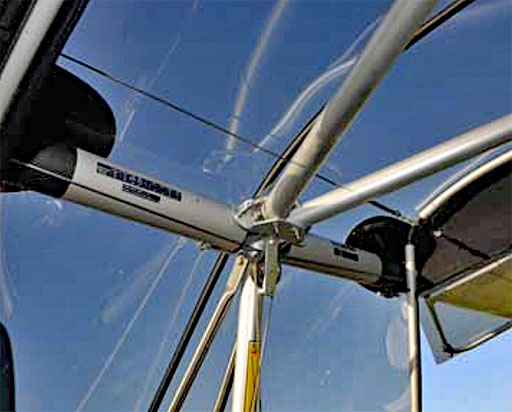
 Rolling out onto the runway I opened the Rotax up to full power. With 13 gallons of fuel on board Nynja was right on the 992-pound gross weight. It was cool and I checked a slight crosswind from starboard.
Rolling out onto the runway I opened the Rotax up to full power. With 13 gallons of fuel on board Nynja was right on the 992-pound gross weight. It was cool and I checked a slight crosswind from starboard. For a high wing aircraft, the visibility is quite good, although as is a feature of practically all-high wing aircraft, it is a tiny bit blind in the turn. Another nice touch is the transparent panel in the roof, as if the aircraft is rolled into a very tight turn it is possible to look through the roof. The controls all seemed quite nicely harmonised and authoritative. The roll rate in particular is distinctly sprightly, while both pitch and yaw control were equally effective. Trim is effective.
For a high wing aircraft, the visibility is quite good, although as is a feature of practically all-high wing aircraft, it is a tiny bit blind in the turn. Another nice touch is the transparent panel in the roof, as if the aircraft is rolled into a very tight turn it is possible to look through the roof. The controls all seemed quite nicely harmonised and authoritative. The roll rate in particular is distinctly sprightly, while both pitch and yaw control were equally effective. Trim is effective. The claimed glide angle is a reasonable 9:1 at 55 knots, while minimum sink is modest at around 500 feet per minute at 45 knots.
The claimed glide angle is a reasonable 9:1 at 55 knots, while minimum sink is modest at around 500 feet per minute at 45 knots. On approach to landing, I nailed the ASI’s needle to 50 with just a smidgen of throttle and then chopped the power. After Nynja’s main wheels touched firmly I lowered the nose and applied maximum braking; I actually locked the wheels up and we skidded momentarily on the damp grass. All total I used a little over 300 feet.
On approach to landing, I nailed the ASI’s needle to 50 with just a smidgen of throttle and then chopped the power. After Nynja’s main wheels touched firmly I lowered the nose and applied maximum braking; I actually locked the wheels up and we skidded momentarily on the damp grass. All total I used a little over 300 feet.
 While most light aircraft producers concentrate on either kits or fully-built, a few swing both ways. Some builders unwilling to experiment with two very distinct business models permitted others to contract build a fully-built version while they focus entirely on kit building. Few have managed to do well with both endeavors but Arion seems to have solved the challenges.
While most light aircraft producers concentrate on either kits or fully-built, a few swing both ways. Some builders unwilling to experiment with two very distinct business models permitted others to contract build a fully-built version while they focus entirely on kit building. Few have managed to do well with both endeavors but Arion seems to have solved the challenges. Yet aviation’s leading draw may be going fast as more is always better, right?
Yet aviation’s leading draw may be going fast as more is always better, right? “Lightning LS-1 is designed and built around Jabiru’s powerful 3300 six-cylinder aircraft engine,” noted Arion. “With a displacement of over 200 cubic inches and a direct drive crank, this compact beauty outputs 120 horsepower to deliver performance rarely matched in a Light-Sport Aircraft.” Lightning has no trouble hitting the LSA speed limit of 120 knots (138 mph).
“Lightning LS-1 is designed and built around Jabiru’s powerful 3300 six-cylinder aircraft engine,” noted Arion. “With a displacement of over 200 cubic inches and a direct drive crank, this compact beauty outputs 120 horsepower to deliver performance rarely matched in a Light-Sport Aircraft.” Lightning has no trouble hitting the LSA speed limit of 120 knots (138 mph). A Jabiru 3300 delivers solo climb in excess of 1,200 fpm and owners can expect 1,000 fpm at its 1,320 pounds gross weight. At cruise speeds of 120 knots, the Jabiru burns a miserly 5.5 gallons an hour. “These are real performance numbers a pilot can rely on; not on a perfect day at sea level or flying around solo, but all loaded up,” stated Nick.
A Jabiru 3300 delivers solo climb in excess of 1,200 fpm and owners can expect 1,000 fpm at its 1,320 pounds gross weight. At cruise speeds of 120 knots, the Jabiru burns a miserly 5.5 gallons an hour. “These are real performance numbers a pilot can rely on; not on a perfect day at sea level or flying around solo, but all loaded up,” stated Nick.
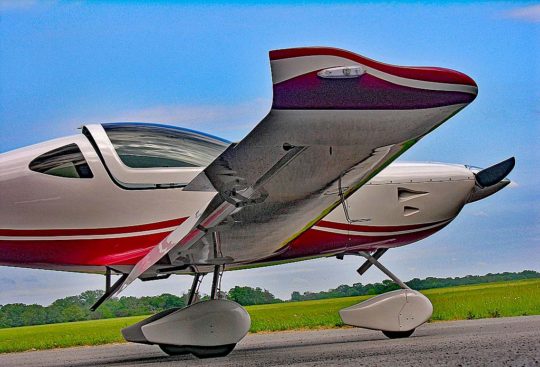 Yet the allure of going fast is great, quickly chewing up the miles en route to your destination. When contemplating a cross country trip of a lengthy distance, fast cannot be too fast. In addition to a higher TAS, we all yearn for a tailwind that will raise our ground speed by another 20 mph.
Yet the allure of going fast is great, quickly chewing up the miles en route to your destination. When contemplating a cross country trip of a lengthy distance, fast cannot be too fast. In addition to a higher TAS, we all yearn for a tailwind that will raise our ground speed by another 20 mph. Most buyers may elect more than the basics but the fully-built Light-Sport Aircraft version of Lightning, called LS-1, is base priced at the genuine bargain of $115,000. Yet if you have time, the interest, and enjoy constructing a kit, Lightning XS has a base kit price of $39,900 with the
Most buyers may elect more than the basics but the fully-built Light-Sport Aircraft version of Lightning, called LS-1, is base priced at the genuine bargain of $115,000. Yet if you have time, the interest, and enjoy constructing a kit, Lightning XS has a base kit price of $39,900 with the 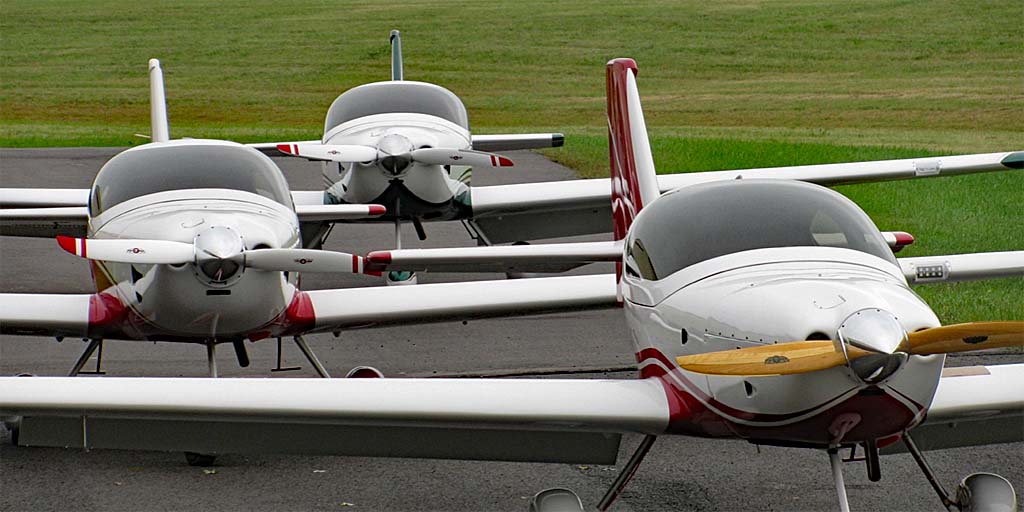

 Welcome to Robert Baslee‘s amazing production of vintage early 20th Century airplanes that ordinary people can build and fly.
Welcome to Robert Baslee‘s amazing production of vintage early 20th Century airplanes that ordinary people can build and fly. “But he’s just copying old designs and remaking them,” said one naysayer.
“But he’s just copying old designs and remaking them,” said one naysayer. How short?
How short?



 In a way, you already know this aircraft or at least its look-a-like predecessor, Paradise’s P1NG. As happens in every industry, a key engineer left a family airplane building business — Paradise, run by granddad, Noe de Oliveira — and started his own aircraft factory. The departure occurred eight years ago.
In a way, you already know this aircraft or at least its look-a-like predecessor, Paradise’s P1NG. As happens in every industry, a key engineer left a family airplane building business — Paradise, run by granddad, Noe de Oliveira — and started his own aircraft factory. The departure occurred eight years ago. With his MC01, Bruno and Montaer are filling a void.
With his MC01, Bruno and Montaer are filling a void. MC01 also continues with a very popular feature: a voluminous baggage area accessed by a third door.
MC01 also continues with a very popular feature: a voluminous baggage area accessed by a third door.  The very first U.S. delivery of MC01 is headed to Wisconsin where a pilot has ordered one with a very special extra: hand controls, a choice available to offer assistance to some pilots. That airplane is due to leave Brazil in March and may be seen at EAA’s big summer show.
The very first U.S. delivery of MC01 is headed to Wisconsin where a pilot has ordered one with a very special extra: hand controls, a choice available to offer assistance to some pilots. That airplane is due to leave Brazil in March and may be seen at EAA’s big summer show.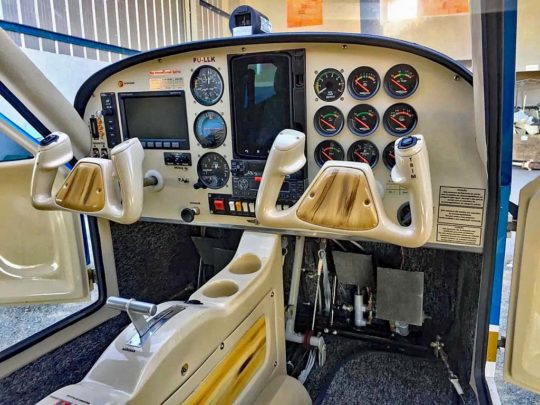
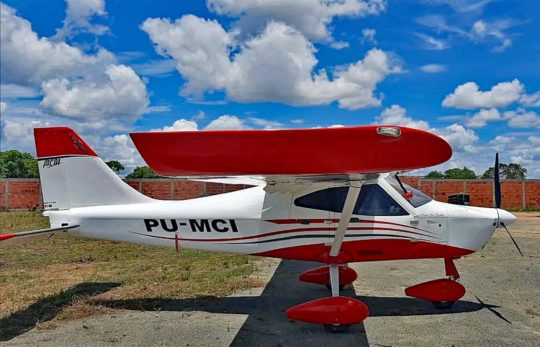 Ed has known Bruno de Oliveira for eight years and will be in charge of sales in the USA. He is seeking dealers in certain states; if this interests you or if you want more details before Sun ‘n Fun, call Ed at 623-695-9040 or
Ed has known Bruno de Oliveira for eight years and will be in charge of sales in the USA. He is seeking dealers in certain states; if this interests you or if you want more details before Sun ‘n Fun, call Ed at 623-695-9040 or 




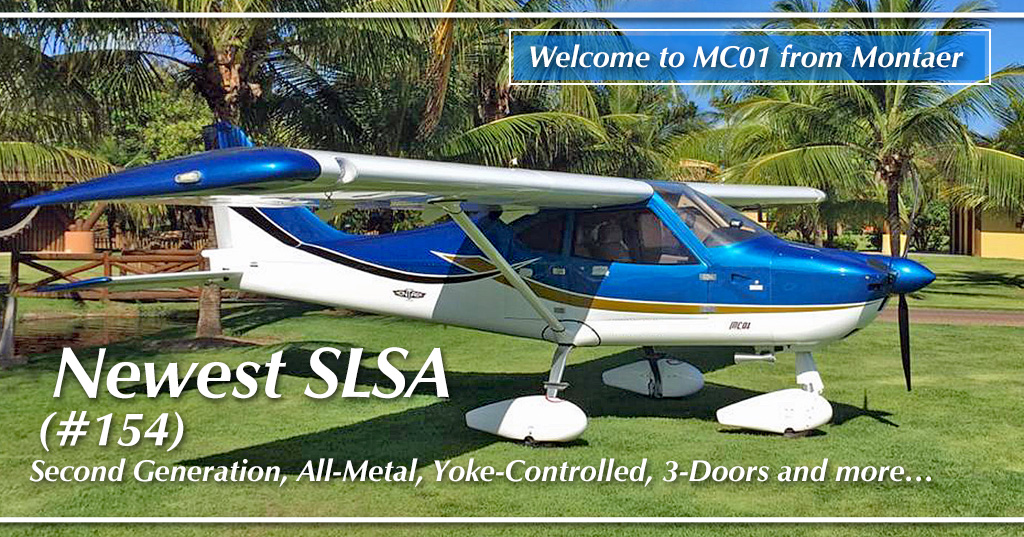

 Now, Luscombe Aircraft Corporation (LAC) has gone cross country again, this time to Jamestown, New York in the western part of the Empire State. Here’s
Now, Luscombe Aircraft Corporation (LAC) has gone cross country again, this time to Jamestown, New York in the western part of the Empire State. Here’s  “Then, we will start assembling complete airplanes using LSA regulations,” confirmed Steve. “Built as a Light Sport Aircraft to ASTM industry consensus standards,” Steve said, “the Model-8 is … an all-metal airplane originally designed and still constructed to USA CAR 4a standard airworthiness requirements.” CAR standards preceded today’s Part 23 rules.
“Then, we will start assembling complete airplanes using LSA regulations,” confirmed Steve. “Built as a Light Sport Aircraft to ASTM industry consensus standards,” Steve said, “the Model-8 is … an all-metal airplane originally designed and still constructed to USA CAR 4a standard airworthiness requirements.” CAR standards preceded today’s Part 23 rules.
 “We have also worked extensively with the professional aviation archivists at AirCorps Aviation in Bemidji, Minnesota to develop a digital archive of Luscombe’s large collection of historical records, engineering drawings, and production work orders. We have inspected and are refurbishing production jigs and tooling to resume production of those hard-to-find parts.
“We have also worked extensively with the professional aviation archivists at AirCorps Aviation in Bemidji, Minnesota to develop a digital archive of Luscombe’s large collection of historical records, engineering drawings, and production work orders. We have inspected and are refurbishing production jigs and tooling to resume production of those hard-to-find parts.

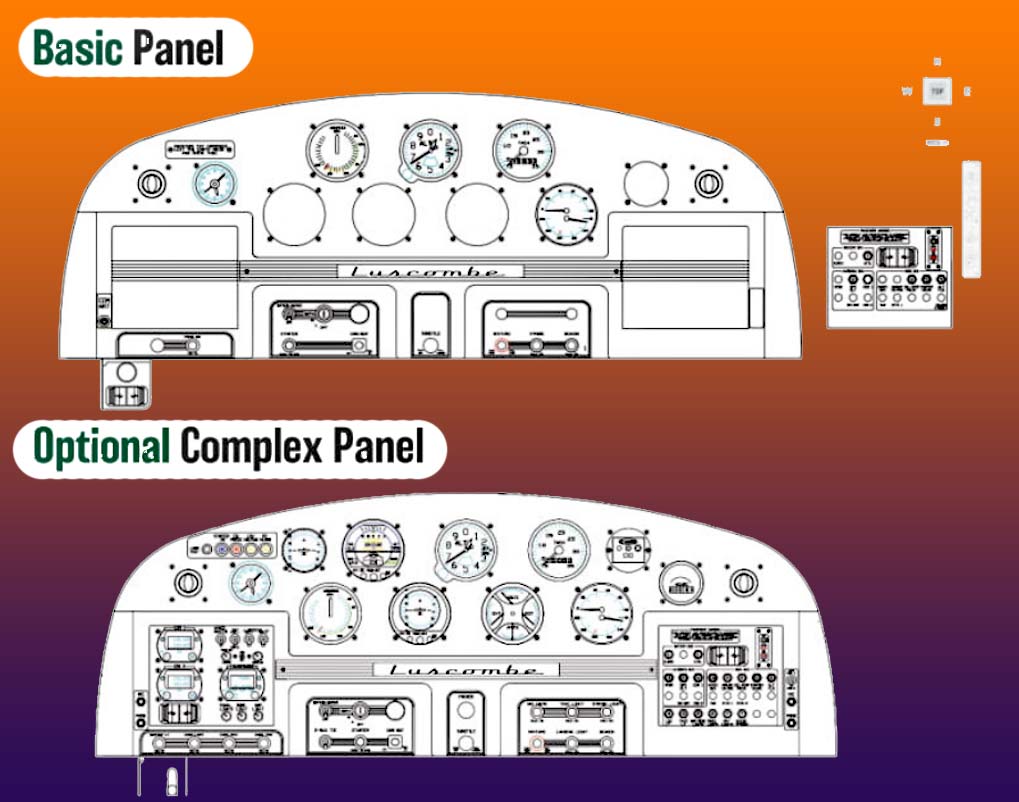

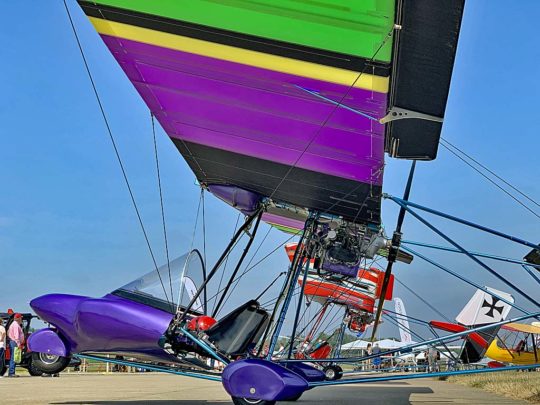 Those who attempted to copy and duplicate Quicksilvers have mostly faded away but some enterprises (see at bottom) built a business out of supplying parts and components that Quicksilver itself never offered.
Those who attempted to copy and duplicate Quicksilvers have mostly faded away but some enterprises (see at bottom) built a business out of supplying parts and components that Quicksilver itself never offered.
 “Now that I think I’ve got it perfected,” Andy expressed, “we’re going to start production on this in 2021.”
“Now that I think I’ve got it perfected,” Andy expressed, “we’re going to start production on this in 2021.” A standard single place Smithsilver by Tri-State Kite Sales assembled for fly away costs about $28,000, said Andy. A two-place with all the extras gets into the high $40,000s and Falcon with a
A standard single place Smithsilver by Tri-State Kite Sales assembled for fly away costs about $28,000, said Andy. A two-place with all the extras gets into the high $40,000s and Falcon with a  Mark Smith founded the company in the late 1970s and formally organized in 1981. In those 40 years, Tri-State has delivered more than 200 complete aircraft and an uncounted number of aircraft served with replacement parts or Tri-State accessories from fiberglass nose pods to new wing covers and everything in between.
Mark Smith founded the company in the late 1970s and formally organized in 1981. In those 40 years, Tri-State has delivered more than 200 complete aircraft and an uncounted number of aircraft served with replacement parts or Tri-State accessories from fiberglass nose pods to new wing covers and everything in between. Falcon has a full enclosure, front to back, and even has cabin heat. “I tested this down to 17 degrees ambient temperature, and you can stay about 70 degrees inside the cockpit.” While the snow swirls around Tri-State and much of the country, that climate control sounds inviting.
Falcon has a full enclosure, front to back, and even has cabin heat. “I tested this down to 17 degrees ambient temperature, and you can stay about 70 degrees inside the cockpit.” While the snow swirls around Tri-State and much of the country, that climate control sounds inviting. As a nearby image shows, the Rotax 503 engine is nestled down in the aft wing center section because Andy wanted to lower the thrust line to a more neutral position. This means the dual-carb Rotax 503 and its 50 horses push the airplane forwards with less pitch influence, which is a significant part of how it can achieve higher speeds.
As a nearby image shows, the Rotax 503 engine is nestled down in the aft wing center section because Andy wanted to lower the thrust line to a more neutral position. This means the dual-carb Rotax 503 and its 50 horses push the airplane forwards with less pitch influence, which is a significant part of how it can achieve higher speeds. Unlike every Quicksilver or Smithsilver, Falcon has a control yoke as does Quicksilver’s GT500 and GT400 models. However, unlike those Quicksilver models, this yoke has been configured specially to make entry much easier.
Unlike every Quicksilver or Smithsilver, Falcon has a control yoke as does Quicksilver’s GT500 and GT400 models. However, unlike those Quicksilver models, this yoke has been configured specially to make entry much easier. Andy referred to the current one as a “nostalgia website” because it holds extensive commentaries written by Mark Smith, the patriarch of Tri-State. His words make a fun, and historic, read but what the vintage website does not do is provide clear navigation to the various aircraft models and component parts or assemblies that Tri-State builds. The new website will address these shortcomings while hopefully keeping all Mark’s original musings.
Andy referred to the current one as a “nostalgia website” because it holds extensive commentaries written by Mark Smith, the patriarch of Tri-State. His words make a fun, and historic, read but what the vintage website does not do is provide clear navigation to the various aircraft models and component parts or assemblies that Tri-State builds. The new website will address these shortcomings while hopefully keeping all Mark’s original musings.

 These systems cost real money (thousands), add “non-functioning” weight (16 to 50 pounds depending on the airplane’s weight and speed), and fill up space you might use otherwise (a BRS system for the Cessna 172 uses a substantial share of the baggage space in that model). All these things — cost, weight, and bulk — are negatives, yet pilots buy these emergency systems regularly. Companies like BRS, Magnum, and Galaxy have sold tens of thousands of these systems.
These systems cost real money (thousands), add “non-functioning” weight (16 to 50 pounds depending on the airplane’s weight and speed), and fill up space you might use otherwise (a BRS system for the Cessna 172 uses a substantial share of the baggage space in that model). All these things — cost, weight, and bulk — are negatives, yet pilots buy these emergency systems regularly. Companies like BRS, Magnum, and Galaxy have sold tens of thousands of these systems. I’ve flown with airframe parachutes for years and I love having such a system on board.
I’ve flown with airframe parachutes for years and I love having such a system on board. It was a valid question. Touches a nerve, doesn’t it? Aren’t we trained for night flying? Don’t we practice engine-out procedures? Well, yes, Private Pilots can fly at night (they should be current) but the training concentrates on normal night operations. I’ve never known an instructor who guides students through engine-out-at-night procedures far from any airport.
It was a valid question. Touches a nerve, doesn’t it? Aren’t we trained for night flying? Don’t we practice engine-out procedures? Well, yes, Private Pilots can fly at night (they should be current) but the training concentrates on normal night operations. I’ve never known an instructor who guides students through engine-out-at-night procedures far from any airport. Softpacks
Softpacks VLS (Vertical Launch Systems)
VLS (Vertical Launch Systems)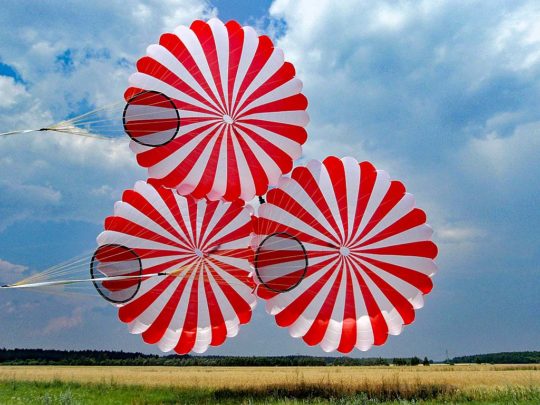
 To prevent down time during service Magnum has a great offer: “Loaner Canopy When Yours is Due for Repack. That’s right! A a loaner canopy, of the same size and style as the one you purchase from us, is available at no charge for installation in your aircraft while your system is being inspected and repacked (repack cycles are 6 years for most systems). This allows our customers to continue to fly with a complete ballistic recovery system in their aircraft while theirs is being repacked! No other parachute company offers their customers this peace of mind!”
To prevent down time during service Magnum has a great offer: “Loaner Canopy When Yours is Due for Repack. That’s right! A a loaner canopy, of the same size and style as the one you purchase from us, is available at no charge for installation in your aircraft while your system is being inspected and repacked (repack cycles are 6 years for most systems). This allows our customers to continue to fly with a complete ballistic recovery system in their aircraft while theirs is being repacked! No other parachute company offers their customers this peace of mind!”

 For some “affordable” may include Special LSA selling for more than $200,000. After all, that’s a fraction of a loaded Cirrus SR22, for example. For others, even $20,000 is more than they wish to spend.
For some “affordable” may include Special LSA selling for more than $200,000. After all, that’s a fraction of a loaded Cirrus SR22, for example. For others, even $20,000 is more than they wish to spend. Naturally, this fact also highlights that the lightest, most affordable airplanes may often be flown in and out of places a Cirrus SR22 owner will never see. Many Part 103 ultralights seem invisible to much of conventional, legacy aviation. It’s their loss.
Naturally, this fact also highlights that the lightest, most affordable airplanes may often be flown in and out of places a Cirrus SR22 owner will never see. Many Part 103 ultralights seem invisible to much of conventional, legacy aviation. It’s their loss. Regarding my market questions, Dave wrote, “I am not sure that I have accurate numbers, as there is no earthly way for me to know if someone has actually built one for Part 103.” I understand his message.
Regarding my market questions, Dave wrote, “I am not sure that I have accurate numbers, as there is no earthly way for me to know if someone has actually built one for Part 103.” I understand his message.
 “To me, ultralights are the ultimate expression of freedom,” he expressed. “You don’t need a license to fly them, but you do need training.”
“To me, ultralights are the ultimate expression of freedom,” he expressed. “You don’t need a license to fly them, but you do need training.” “Most of the materials to build the Affordaplane you can buy locally. Nowadays you can get all your metal locally, even the windscreen came from Home Depot,” observed Dave. “Aircraft bolts you buy from an aircraft supply house. Your motor can come from many places, like Ebay or Barnstormers.com. The fabric to cover the wings and tail comes from
“Most of the materials to build the Affordaplane you can buy locally. Nowadays you can get all your metal locally, even the windscreen came from Home Depot,” observed Dave. “Aircraft bolts you buy from an aircraft supply house. Your motor can come from many places, like Ebay or Barnstormers.com. The fabric to cover the wings and tail comes from  The Affordaplane Plans package now contains 173 information packed pages, and everything you need to build your own Affordaplane aircraft is included.
The Affordaplane Plans package now contains 173 information packed pages, and everything you need to build your own Affordaplane aircraft is included.

 Technical Specifications
Technical Specifications
 This report took a bit more time as the effort to begin counting Part 103 ultralights altered our view of the FAA aircraft registration data. Most of you may prefer this simpler report, but the data hounds among readers can drill all the way down to the last aircraft on
This report took a bit more time as the effort to begin counting Part 103 ultralights altered our view of the FAA aircraft registration data. Most of you may prefer this simpler report, but the data hounds among readers can drill all the way down to the last aircraft on  Many may be surprised. Registrations grew? …in 2020!? Indeed, they did, and that’s without counting Part 103 ultralights that do not need to be registered with FAA. We’ll have lots more on Part 103s in a couple months (the
Many may be surprised. Registrations grew? …in 2020!? Indeed, they did, and that’s without counting Part 103 ultralights that do not need to be registered with FAA. We’ll have lots more on Part 103s in a couple months (the 
 Why is this true? Many reasons might explain but affordability is a key element and, no question about it, investing your labor reduces the cash outlay to have your own airplane. At the same time, the sophistication of Special LSA has risen over the years. Features such as bigger, more powerful engines, autopilot, big fancy panel displays, leather interiors, complex manufacturing with carbon fiber, and the cost of complying with ASTM standards has increased the cost of some SLSA beyond $200,000. At this price point, some readers note a recreational aircraft can cost more than your house (not in California or New England, perhaps, but in many U.S. regions this may be true).
Why is this true? Many reasons might explain but affordability is a key element and, no question about it, investing your labor reduces the cash outlay to have your own airplane. At the same time, the sophistication of Special LSA has risen over the years. Features such as bigger, more powerful engines, autopilot, big fancy panel displays, leather interiors, complex manufacturing with carbon fiber, and the cost of complying with ASTM standards has increased the cost of some SLSA beyond $200,000. At this price point, some readers note a recreational aircraft can cost more than your house (not in California or New England, perhaps, but in many U.S. regions this may be true). “Look at the slope of the lines,” Steve advises. “The brown (kit) line is steeper, especially last year. That means two things: First, a lot of people finished their kit planes in 2020 – more than finished them in 2019 (so that’s how they spent their lockdown time). Secondly, people are buying more kits than factory-built aircraft. Of course, there’s a lag in the data
“Look at the slope of the lines,” Steve advises. “The brown (kit) line is steeper, especially last year. That means two things: First, a lot of people finished their kit planes in 2020 – more than finished them in 2019 (so that’s how they spent their lockdown time). Secondly, people are buying more kits than factory-built aircraft. Of course, there’s a lag in the data
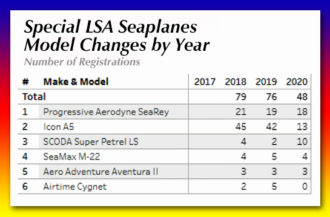 Whatever the explanation, Italy-based Magni surged from well behind the market leader to race ahead in the American gyroplane market for 2020.
Whatever the explanation, Italy-based Magni surged from well behind the market leader to race ahead in the American gyroplane market for 2020.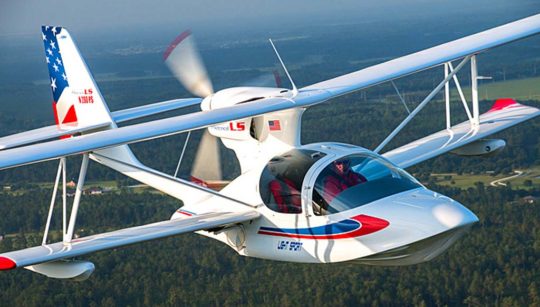

 “
“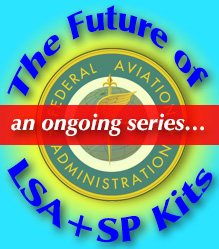 “
“
 After nearly a year of precious few such events, trying to plan for airshows you wish to attend in 2021 remains complicated by a variety of factors.
After nearly a year of precious few such events, trying to plan for airshows you wish to attend in 2021 remains complicated by a variety of factors. As anyone can read everywhere you look, a new virus strain is already starting to upset things in 2021. A rescheduled Aero set its sights on April as usual. I was exceedingly pleased when leader Roland Bosch and his team placed the dates so those of us who wish could attend both Sun ‘n Fun and Aero. Yay!
As anyone can read everywhere you look, a new virus strain is already starting to upset things in 2021. A rescheduled Aero set its sights on April as usual. I was exceedingly pleased when leader Roland Bosch and his team placed the dates so those of us who wish could attend both Sun ‘n Fun and Aero. Yay!
 However, times advance inexorably. Wood lead to metal which gave way to composite, a category now including carbon fiber. Through it all, Plant City, Florida-based Sensenich has managed to keep their products “right on the nose” (except for pusher configurations, of course).
However, times advance inexorably. Wood lead to metal which gave way to composite, a category now including carbon fiber. Through it all, Plant City, Florida-based Sensenich has managed to keep their products “right on the nose” (except for pusher configurations, of course).

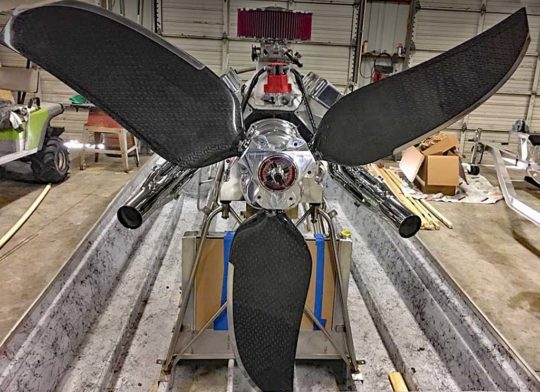 Performance is not only measured in speed or rate of climb. Weight also matters.
Performance is not only measured in speed or rate of climb. Weight also matters.